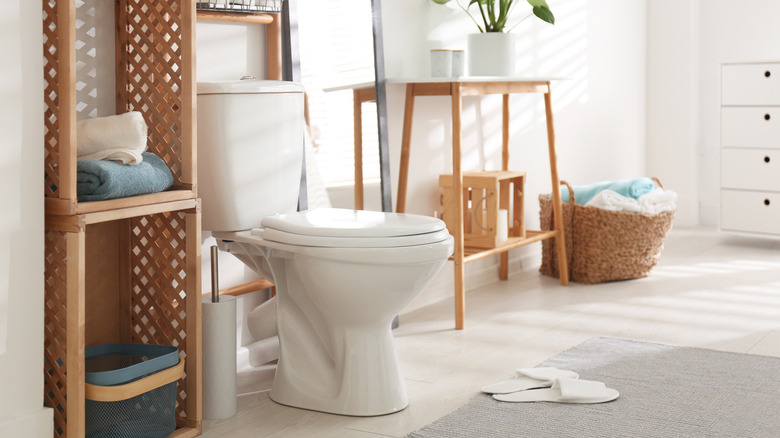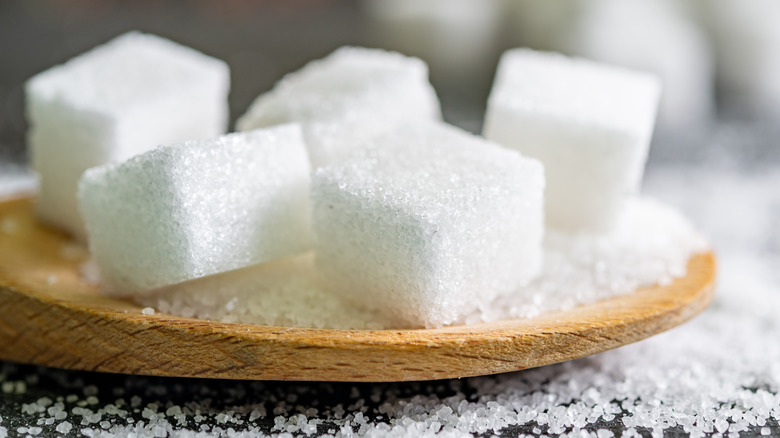You Might Need To Check Your Blood Sugar If You Notice This In Your Toilet
When we hear anything about blood sugar, diabetes is usually the first thing that comes to mind. It's not unusual that our minds immediately think of diabetes because, chances are, we know someone who has been diagnosed with it. The Centers for Disease Control and Prevention reports that 27.8 million Americans have been diagnosed with type 2 diabetes, while 8.5 million have type 2 diabetes without a diagnosis.
According to the Mayo Clinic, type 2 diabetes occurs when too much sugar is in the bloodstream. This is due to the pancreas not producing enough insulin to remove the sugar from the bloodstream. There are many symptoms associated with diabetes, but the one we may be ignoring could be right in our toilet bowls. Diabetes can affect many functions and systems in the body, and its impact on the urinary system can cause some changes in your urine and your toilet that you should be on the lookout for.
Sugar in your urine is not normal
The high blood sugar levels characteristic of diabetes can cause changes in the urinary system that lead to symptoms. Dr. Michael J. Kennelly, a professor of urology at the Carolinas Medical Center, says, "Diabetes can affect the function and structure of the lower urinary tract, which in turn may play a role in patients with diabetes having more UTIs, overactive or underactive bladder, and problems with urination," (via Urology Care Foundation). These changes in the body can cause sugar to form in your urine.
According to Medical News Today, sugar in the urine is not normal. When sugar is present in the urine, it is called glycosuria. This happens because the kidneys cannot absorb all the sugar when it filters the blood. The sugar that doesn't get absorbed gets released into the urine. This can lead to some unusual sights in your toilet.
High blood sugar can change your urine
Sugar in your urine can cause changes in the smell and appearance of your urine. Healthline suggests the first sign of diabetes for some people is urine that smells fruity or sweet and looks cloudy. According to the Cleveland Clinic, cloudy urine has a milky, hazy appearance rather than normal urine's clear, light-yellow color.
Not only can high blood sugar levels change your urine, but they can also change the appearance of your toilet. While there isn't any clinical evidence that toilet mold and diabetes are directly linked, mold buildup could be a sign that someone in your family has diabetes, according to Healthline.
With the prevalence of diabetes on the rise, you should always look before you flush. What's in your toilet can provide clues about your health status. If you notice any abnormal changes in your urine, schedule an appointment with your doctor.



